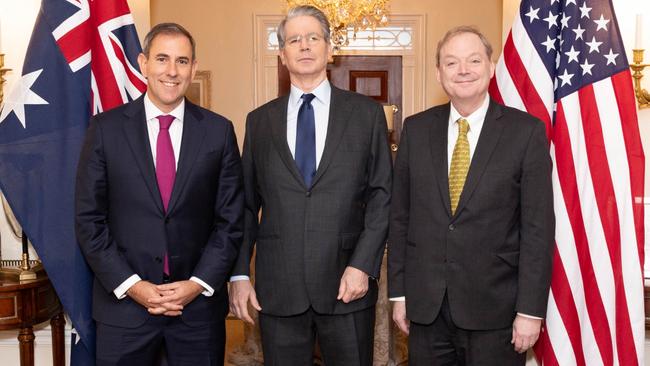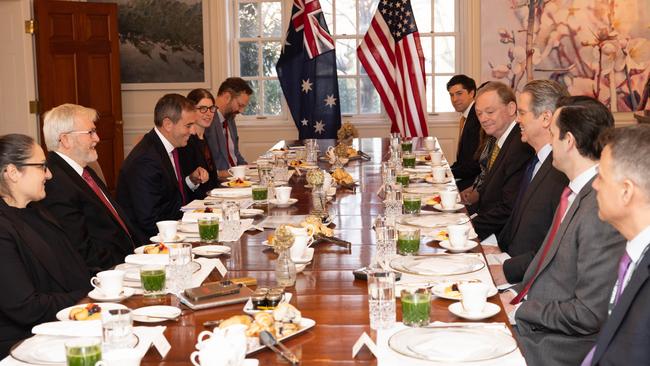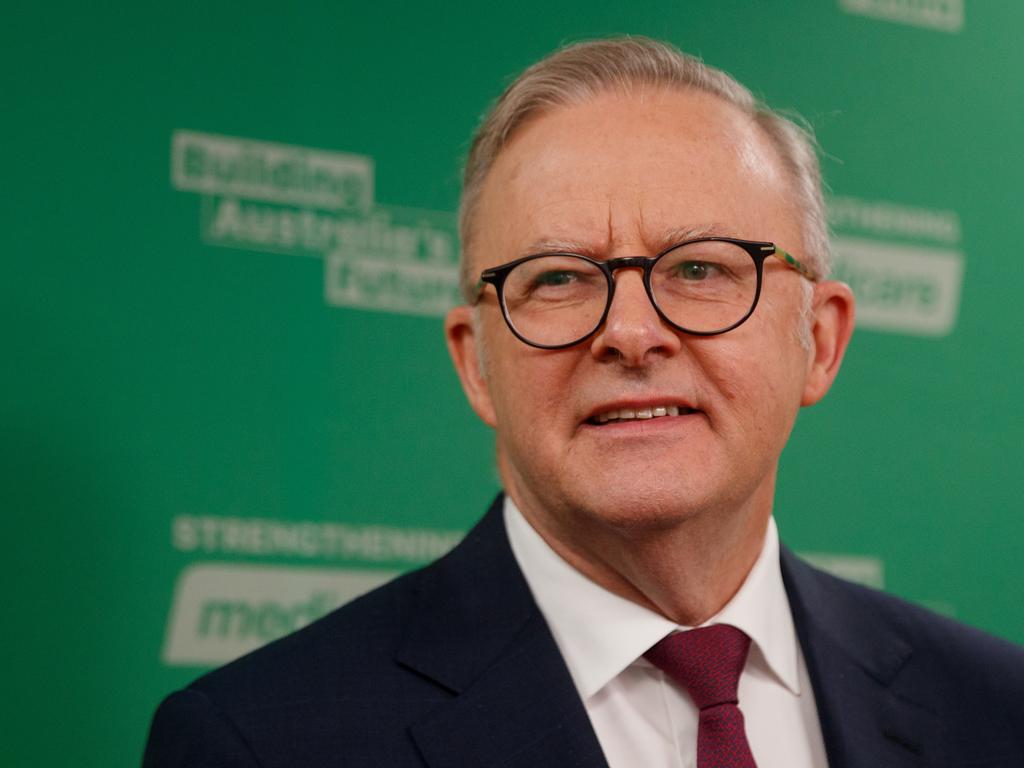Anthony Albanese hurtles toward Trump tariff carve-out deadline
The clock is ticking for the Prime Minister to secure a tariff deal with Donald Trump’s administration as both the March 12 deadline and federal election loom.

Anthony Albanese is yet to lock in tariff exemptions for Australia and Trade Minister Don Farrell has not secured a face-to-face meeting with US counterpart Howard Lutnick, as the clock ticks on Donald Trump’s March 12 deadline and Australia’s looming federal election campaign.
After the US President on Wednesday (AEDT) flagged potential tariffs on copper imports in addition to steel and aluminium, senior Albanese government figures are increasingly concerned about Australia being hit with broader trade imposts.
The stand-off over a carve-out for Australia has continued despite the Prime Minister’s phone call with Mr Trump and Jim Chalmers’ election-eve visit to Washington DC, where Treasury secretary Scott Bessent washed his hands of any final tariff decision.
Senator Farrell, who congratulated Mr Lutnick on his position over a brief phone call last week, is scrambling to organise an in-person meeting with the US Secretary of Commerce who is leading Mr Trump’s tariff agenda that countries fear will spark a trade war.
As the South Korean Trade Minister prepares to meet Mr Lutnick in the US next week, the potential of Mr Albanese launching his election campaign immediately after Western Australia’s election on March 8 could force Senator Farrell to opt instead for a virtual meeting to put forward Australia’s case for an exemption.
Mr Lutnick was understood to have addressed the Super Summit behind closed doors on Tuesday night (Wednesday AEDT) as the Albanese government hopes to leverage the prospect of tens of billions in extra investment from Australian super funds being funnelled into the US economy as part of its diplomatic drive to obtain the tariff exemption.
With Treasury secretary Steven Kennedy on Wednesday confirming there were no plans to impose tariffs on US goods if Australian products are impacted, the Albanese government is understood to be cognisant of managing expectations on whether the White House will grant steel and aluminium tariff exemptions.

Instead of imposing retaliatory tariffs if no exemptions are won, Dr Kennedy said the government would instead look at diversification strategies to find new trade markets. Speaking at a Senate estimates hearing, he said Australia’s experience with China showed that it was best “governments did not compound the economic cost by implementing retaliatory tariffs or barriers that would have harmed Australian consumers and businesses”.
As the deadline for the Albanese government to secure tariff exemptions becomes tighter, Mr Bessent launched a defence of Mr Trump’s tariffs at the Australian embassy in Washington as a crucial tool to re-industrialise America, generate government revenue and bring about a broad economic rebalancing to strengthen US economic security.
After giving the keynote speech at the Super Summit, Mr Bessent would not weigh in over whether Canberra would be granted an exemption from Mr Trump’s proposed 25 per cent tariffs on steel and aluminium – due to begin from March 12.
“We’ll know more about that from USTR (the United States Trade Representative) and Commerce (Secretary),” he said as he left the building. “It’s not really a Treasury issue.”
During his remarks, Mr Bessent sketched out the Trump administration’s expectations for American allies to contribute more towards collective security arrangements and restructure their economies to reduce any imbalances that hollowed out vital US industries.

He acknowledged that, on trade, there was “very little friction between the US and Australia” but made clear the Trump administration was pushing ahead with its reciprocal tariff agenda from early April.
He said that on April 2 the Commerce Department and USTR were “going to issue an expansive report” looking at the full spectrum of trade barriers. This would include a thorough examination of tariffs levied against the US as well as the use of non-tariff trade barriers, currency manipulation and fines – including those targeting US digital and tech companies.
Dr Chalmers, who met Mr Bessent and US National Economic Council director Kevin Hassett, said it was “clear to us before the meeting, during the meeting and after the meeting that this call will be made by President Trump on the advice of senior figures in his administration”.
He said he was “able to continue but not conclude the discussions” over tariff exemptions.
“When it comes to the exemption that we seek from tariffs on steel and aluminium, Australia has a different case to make than other countries,” the Treasurer said.
“The Americans run a very substantial trade surplus with Australia … That trade surplus is two to one. At the same time, Australia’s got a free floating currency. We don’t manipulate our currency.
“We’ve got a very productive relationship between the steel and aluminium sectors in both countries. Our products are often an input into domestic production here.”
The Treasurer said Australia was a “very willing and longstanding defence partner” of the US while the economic relationship was “full of mutual benefits, shared interests and big opportunities”.
Asked whether the US was still as reliable an economic and strategic partner as in the past, Dr Chalmers replied: “I’ve got no reason to believe otherwise.”
In his speech at the Australian embassy, Mr Bessent defended tariffs as a means of increasing US industrial capacity, creating and protecting US jobs while also improving American national security.
Tariffs were a mechanism “to correct and manage the internal imbalances in other economies by adjusting the US consumer accommodation of their excess supply”.
“Today US security assurances and market access need to meet with stronger commitments from our allies to spend more on our collective security and to structure their economies in ways that reduce imbalances over time,” he said.
Mr Bessent said that US economic policy going forward would “more closely link security and economic relations”.
It was a matter of national security that America’s manufacturing share of GDP had fallen over the last two decades from about 15 to 11 per cent, while China – “the most imbalanced economy in modern history” – had grown manufacturing to 28 per cent of GDP.
“If countries continue to subsidise their industrial bases with suppressed consumer wages relative to their productivity, proactive measures must be brought to address fundamental change,” he said. “Tariffs are an important tool in the toolbox. But, be clear, this administration is taking a whole of government approach to address these issues.”
Additional reporting: Jack Quail






To join the conversation, please log in. Don't have an account? Register
Join the conversation, you are commenting as Logout